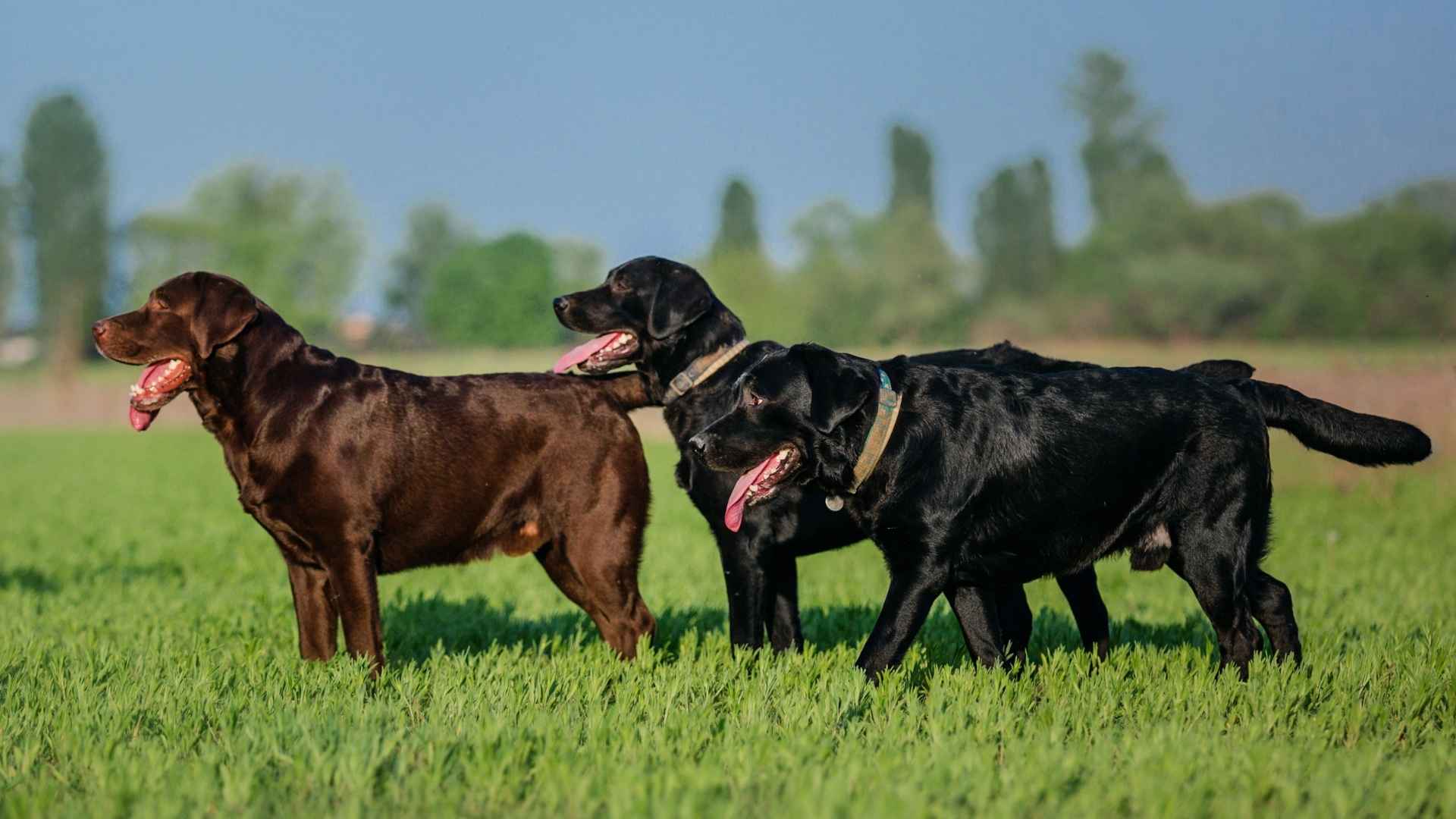Some dogs are content curling up beside you all day, while others seem to have endless energy coursing through their veins. Hyperactive hunting dog breeds fall firmly into the latter category. These high-octane canines were bred for action—chasing scents through the woods, flushing out birds, or tracking game across rugged terrain.
If you’re the outdoorsy type who loves hiking, hunting, or canine sports, these dogs will match your energy stride for stride. While most dogs need moderate daily exercise, hyperactive hunting breeds require more intense physical activity and mental stimulation to stay healthy and happy. They’re not couch potatoes—they’re go-getters who thrive when given a job to do.
Whether they’re scent hounds or bird dogs, these breeds were built for endurance and drive. In this post, we’ll dive into the most hyperactive hunting dog breeds and what makes them great companions for active, adventurous lifestyles.
Hyperactive hunting dog breeds
1. Golden Retriever
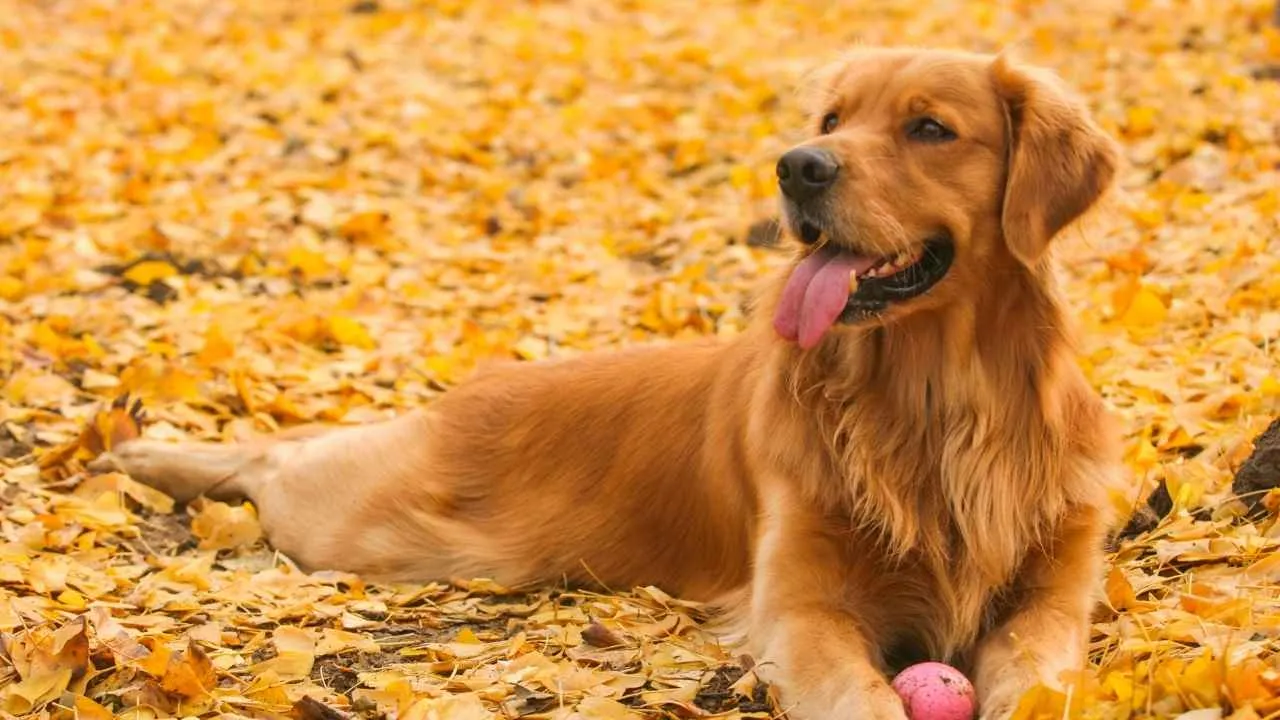
Golden Retrievers are often celebrated as the ultimate family companion, but their roots trace back to the hunting fields of the elite. Originally bred to retrieve game on both land and water, Goldens were designed to be versatile, friendly, and hardworking. And yes, many still thrive as hunting dogs today, though finding one with strong working instincts takes a bit more effort.
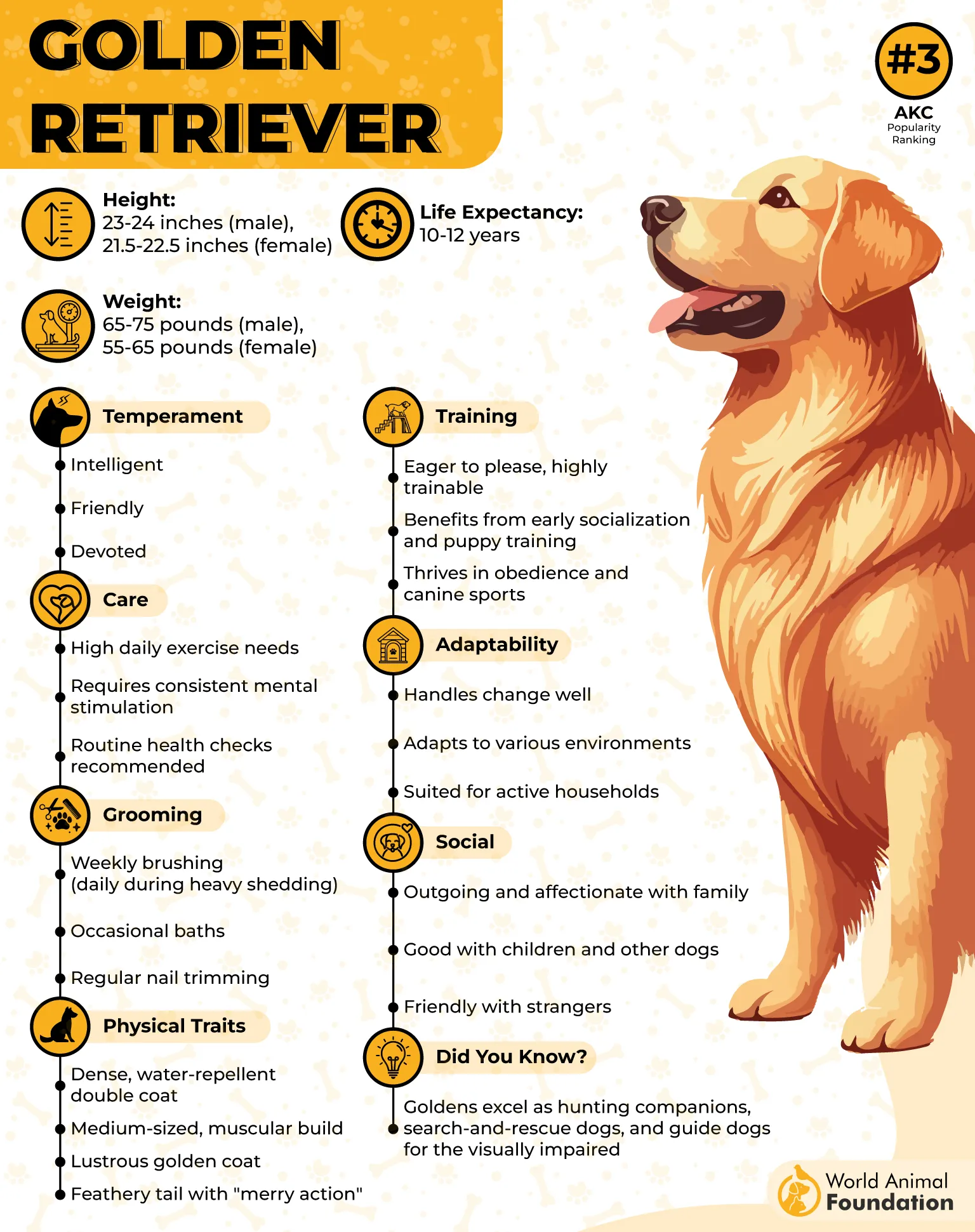
Goldens were carefully bred to combine key traits from several breeds, resulting in a dog that’s not only athletic but also remarkably gentle. Their strong sense of smell gives them a distinct edge when tracking down birds, while their intelligence and eagerness to please make them a joy to train. Many hunters admire their ability to grasp commands quickly and even adapt to field situations on their own.
This energetic breed has impressive stamina and seems to never run out of steam. With proper conditioning, they can retrieve for hours without missing a beat.
Like other retrievers, Golden Retrievers are known for their “soft mouth”—a crucial trait that allows them to gently carry birds without causing damage. Fun fact: they’re so gentle that some can carry a raw egg without cracking it!
Whether it’s sticks, toys, or your missing sock, Goldens just love to carry things. This instinct to retrieve is deeply ingrained and shines in both hunting and dog sports. From agility and obedience to dock diving, Golden Retrievers thrive in any activity that challenges their body and mind.
2. German Shorthaired Pointer
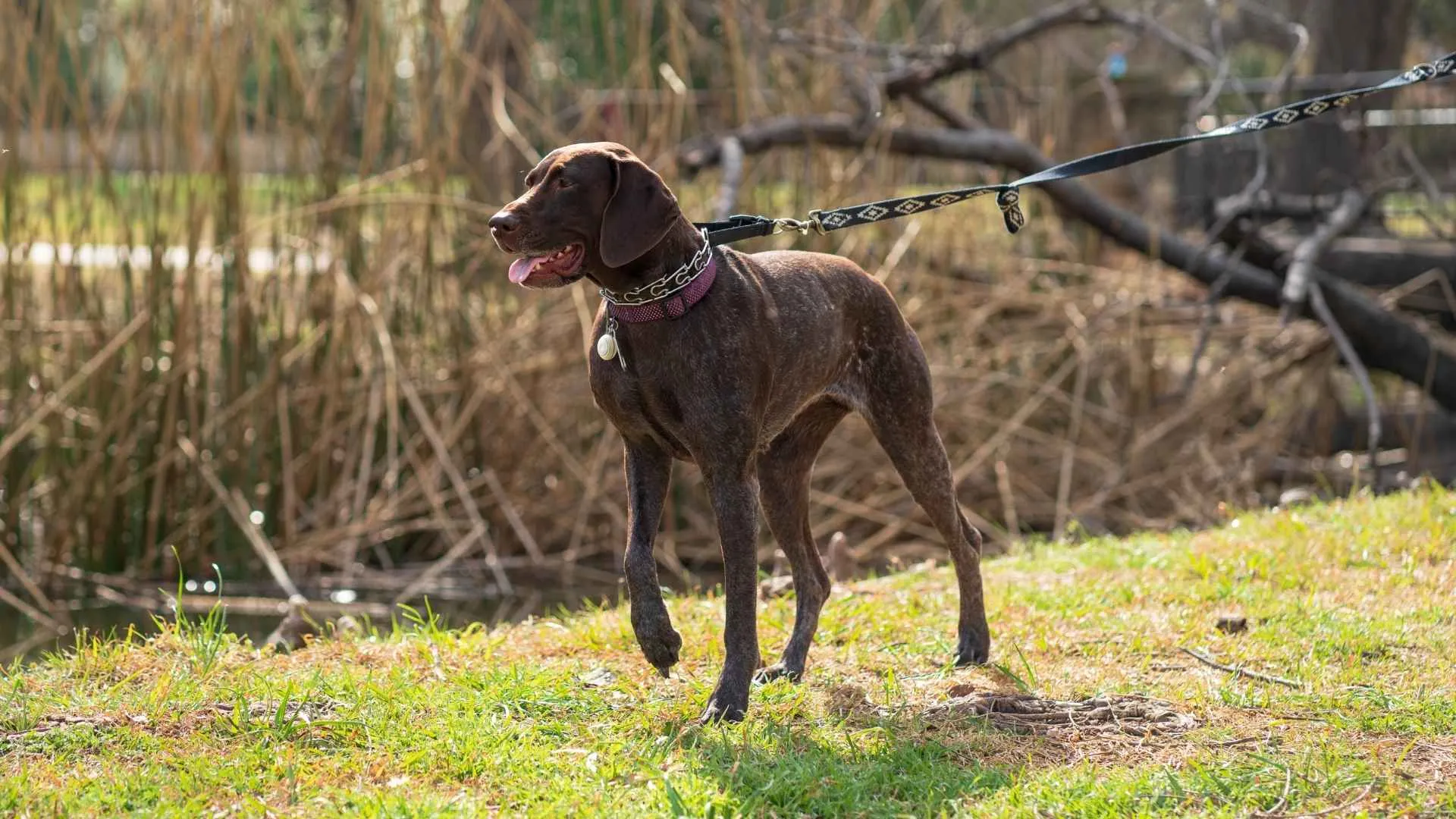
German Shorthaired Pointers (GSPs) have a regal, athletic appearance that matches their lively personalities. Bred for hunting, they are fast, agile, and full of stamina—traits that make them stand out among sporting breeds.
Their roots trace back to 17th-century Europe when Spanish Pointers and Bloodhounds were crossed to create a versatile dog capable of tracking and retrieving game. By 1872, the breed was officially recognized by the German Kennel Club, and its popularity has only grown since.
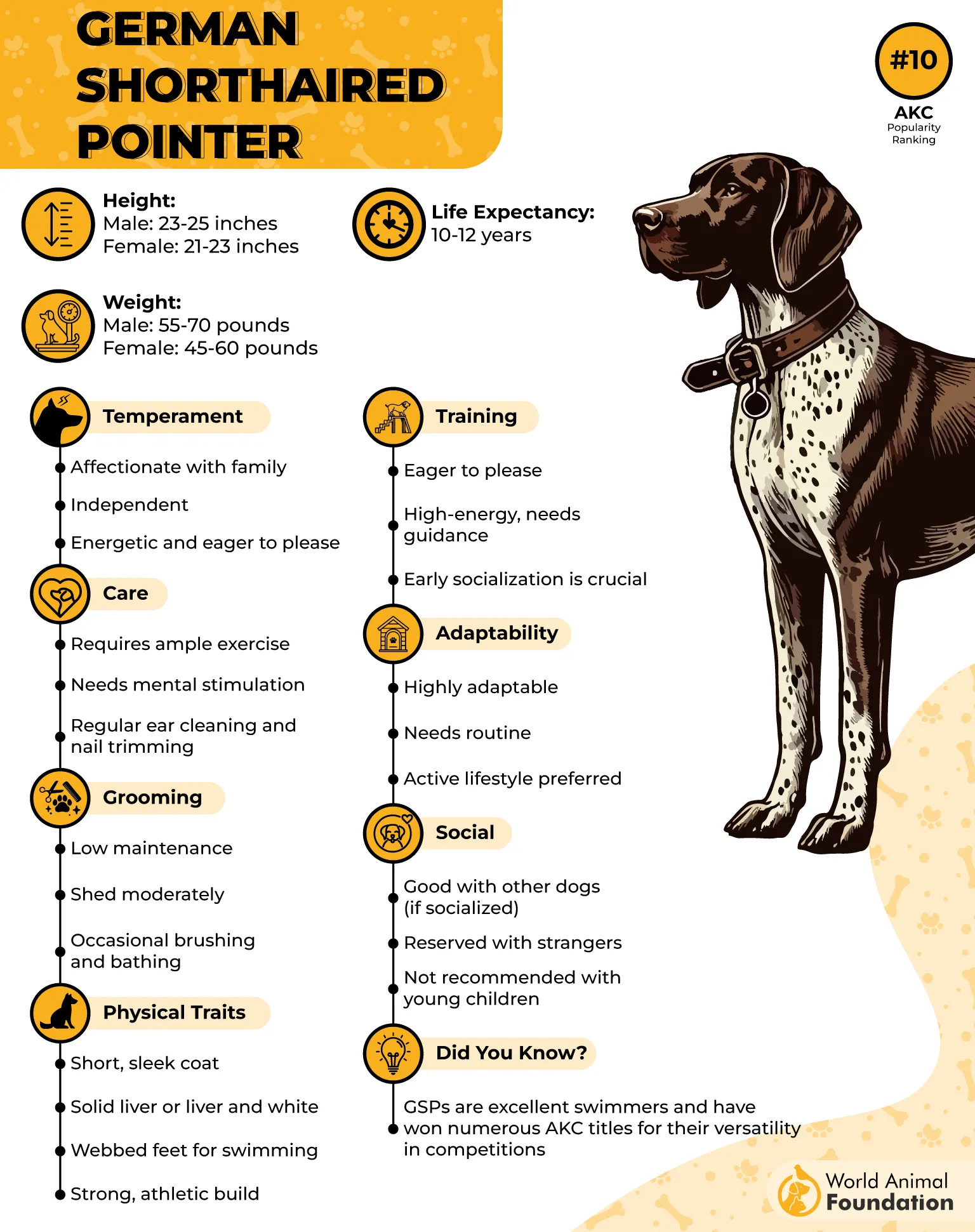
Known as “bird dogs,” GSPs don’t just retrieve—they’re also natural pointers. When they catch a scent, they’ll freeze, nose locked in the direction of the game, waiting for a command to flush it out. Their role as “gun dogs” means they’re comfortable working alongside hunters and firearms, whether retrieving birds from water or chasing down game on land.
While they’re incredibly affectionate and adaptable, German Shorthaired Pointers need serious daily activity to keep their energy in check. Lack of proper mental stimulation and physical exercise (think puzzle toys, long hikes, agility training, or even dock diving) —can lead to destructive behavior, states PetMD.
Their natural prey drive makes them a questionable fit for homes with small pets, especially birds. That said, with the right environment and active lifestyle, a GSP can be a loyal, loving, and tireless family companion—even into their senior years when that puppy-like exuberance still shines through.
3. Labrador Retriever
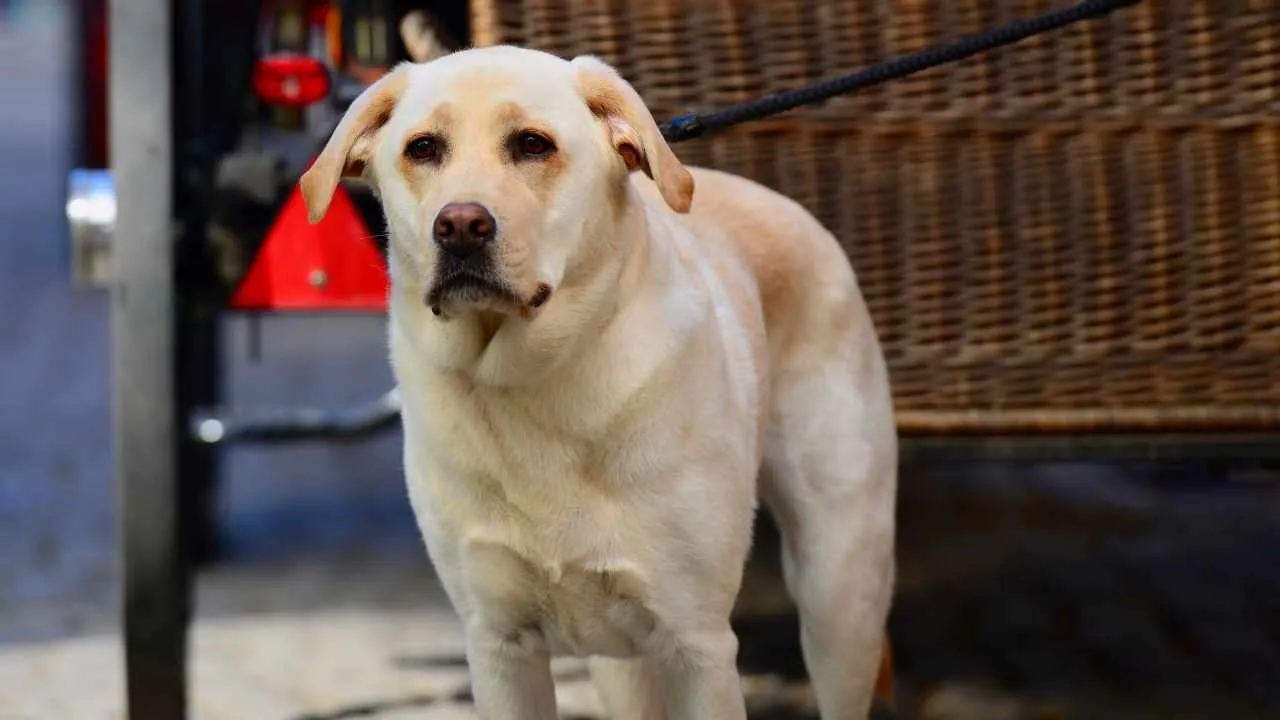
Labrador Retrievers have long been admired for their versatility and good-natured personality. Originally bred to help fishermen retrieve nets, Labs were later developed in England as an excellent hunting companion, especially skilled in retrieving waterfowl and game.
Their strong swimming ability and tolerance for cold water made them ideal for long hours in the field, and they continue to excel in Retriever Field Trials and Hunting Tests today.
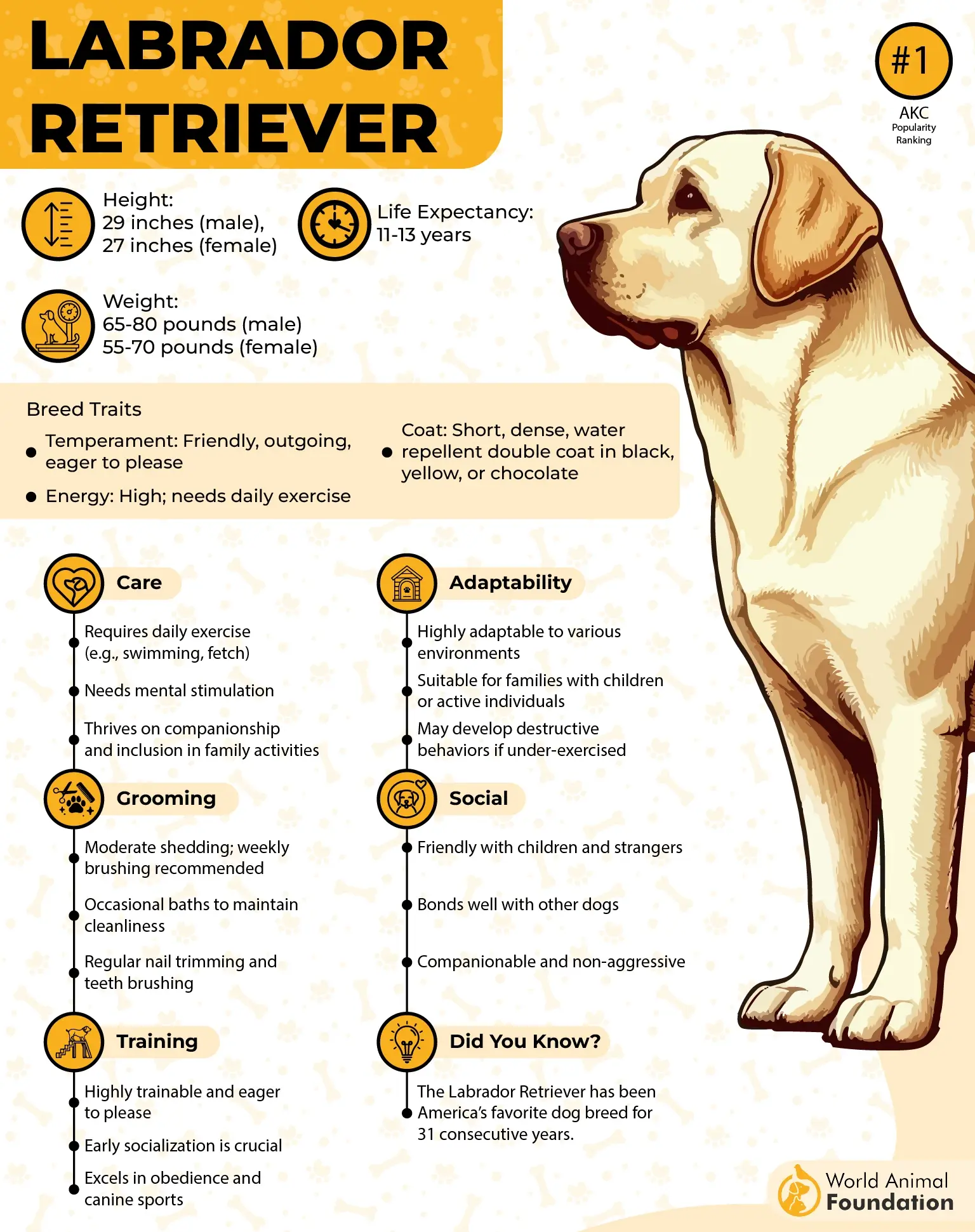
Built for both strength and stamina, Labs are large, muscular dogs with broad heads, soulful eyes, and famously waggy, otter-like tails. They’re known not only for their work ethic but also for their warm, people-loving nature, which is why they are also regarded as “velcro dogs”.
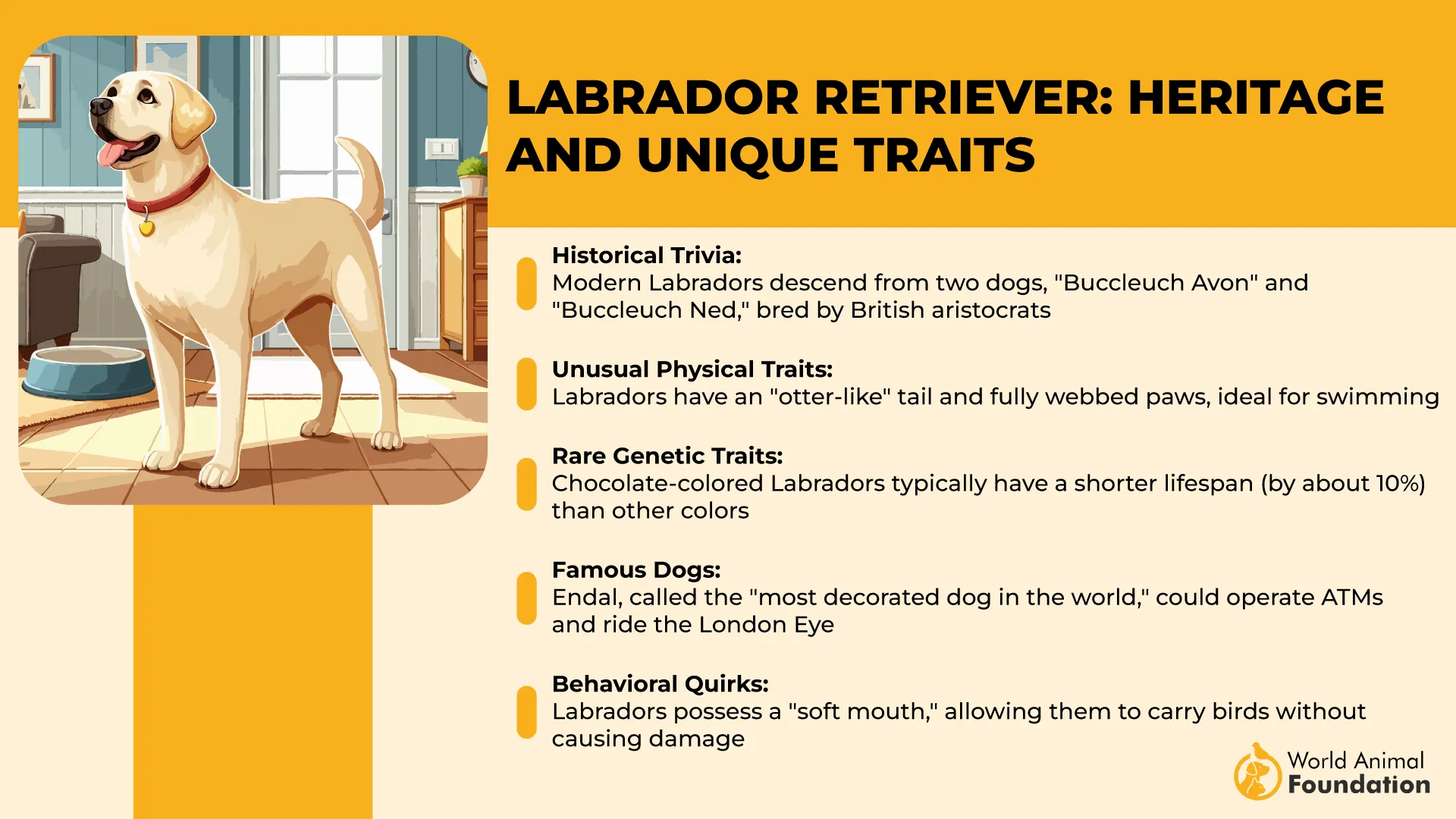
Their intelligence and eagerness to please have opened doors beyond the hunting world. Labs now serve in roles ranging from guide dogs and therapy dogs to search and rescue and law enforcement.
They adapt beautifully to active families, thrive outdoors, and are happiest when they have a purpose, especially if it involves water. With their friendly, affectionate temperament, it’s no surprise they remain one of the most beloved and popular dog breeds in the U.S. and the U.K.
4. English Springer Spaniel
The name “springer” in English Springer Spaniel dates back to 1902, referring to the breed’s skill at “springing” game—chasing birds out of hiding so hunters can take their shot. But these dogs have a much longer history, with Spaniel-type dogs existing for centuries.
Today, English Springer Spaniels are well-known not only as hunting dogs but also as popular show dogs and loving family pets.
Recognizable by their wavy coats and floppy ears, Springers typically stand about 20 inches tall and weigh between 40 and 55 pounds.
Their size gives them an advantage in navigating tight spaces during a hunt, and their bird-flushing and retrieving skills rival those of Labradors and Golden Retrievers. Outside the field, they make energetic and affectionate companions who thrive on regular exercise for at least an hour daily and mental challenges.
Training from a young age is key, as Springers are a highly intelligent breed, eager to please, and quick learners. Whether joining family hikes or playing fetch, they bring stamina and enthusiasm to any activity. Originally linked to similar breeds from Spain, the English Springer Spaniel remains close to the classic ‘Land Spaniel’ type, showing great versatility and endurance.
While show lines can be a bit calmer, all Springers love to carry and retrieve objects. When their active nature is understood and nurtured, these friendly, extroverted dogs make perfect pals for outdoor-loving families, states Purina.
5. Beagle
Beagles are small hound dogs, beloved both as pets and hunters. Sturdy and solid for their size, Beagles come in two main varieties recognized by the American Kennel Club (AKC): smaller ones under 13 inches tall and lighter than 20 pounds and slightly larger ones standing up to 15 inches and weighing between 20 and 30 pounds.
Originally bred for hunting rabbits and hares, Beagles are natural scent hounds with incredible stamina. Their long ears aren’t just adorable—they actually help funnel scent particles toward their noses, which are packed with around 220 million scent receptors.
This powerful sense of smell has made Beagles invaluable for tasks like sniffing out contraband in airports since the 1980s, according to Britannica.
Because their noses lead the way, Beagles can easily get distracted following interesting scents, making housetraining a bit of a challenge. Engaging their curiosity early on by exposing them to various scents at home can help keep them focused.
Being an active breed, Beagles require daily exercise and socialization to burn off energy. Without enough activity, they may resort to digging or howling to entertain themselves. Training with tasty rewards works best to keep these smart dogs eager to obey.
A fun Beagle fact:
Many sport white-tipped tails, a clever trait bred in so hunters can spot them even when their noses are on the ground.
6. Boykin Spaniel
The Boykin Spaniel is a medium-sized flushing and retrieving dog known for its beautiful, solid brown coat that ranges from rich liver to deep chocolate. Slightly larger than a Cocker Spaniel but more compact than a Springer, Boykins have soulful eyes framed by large, feathery ears.
Originally bred to work in the lakes and swamps of South Carolina, these web-toed dogs are natural swimmers, comfortable in water and perfect for waterfowl hunting.
Once a favorite of South Carolina hunters, Boykins are now beloved beyond their home state for their cheerful, eager nature. At home, they’re mellow and affectionate; in the field, determined and hardworking. They excel with basic obedience and hands-on experience but may resist the rigid demands of advanced field trial training.
Boykins excel at retrieving ducks and wild turkeys, quietly sitting by your blind or smoothly following at heel during jump-shooting. On land, they naturally quarter and flush game birds, retrieving them with style. Their compact size made them ideal for hunters travelling by boat, whereas larger retrievers were less practical.
This versatile breed is energetic and tough, yet a gentle and loyal companion for families, including kids and other pets. Early socialization and training help ensure Boykin grows into a well-mannered companion. Extremely intelligent and eager to please dogs, Boykins generally take to training with ease, making them a wonderful all-around hunting buddy and household friend.
7. Brittany
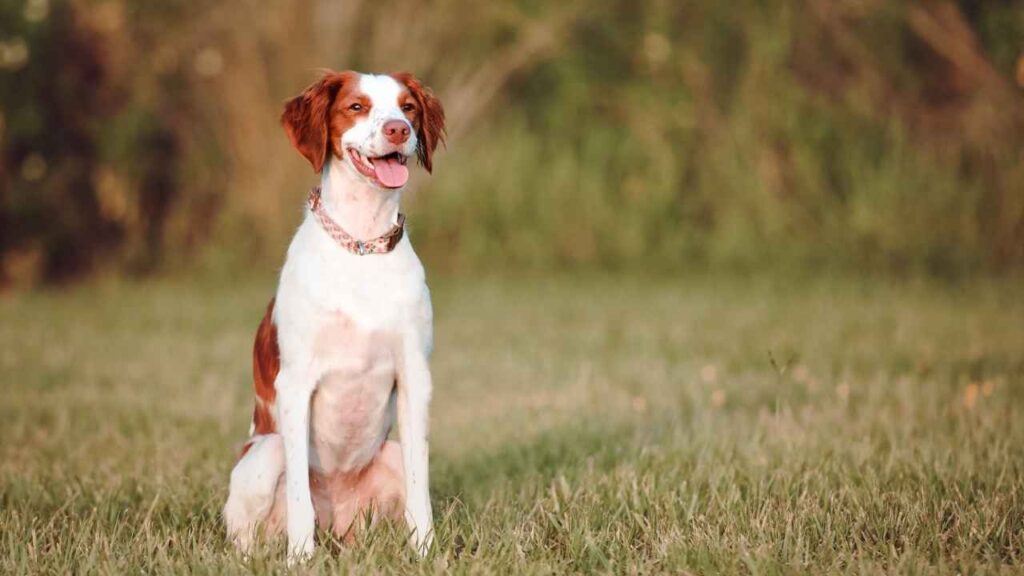
Ready to add an energetic and affectionate companion to your life? The Brittany, also known as the Brittany Spaniel, fits the bill perfectly. Originally bred in France’s Brittany province during the 1800s, this sporty, smart pup was designed to be a skilled hunting partner, excelling in pointing and retrieving game with quickness and agility.
Their dense, feathered coat protects them in the field, but they need regular grooming. This breed thrives with vigorous daily exercise and enjoys activities like fetch, running, and hiking. Agility training makes them a perfect fit for active families or singles who love the outdoors.
The breed’s origins trace back to a mix of British pointers, setters, and spaniels with local French hunting dogs, resulting in the versatile, leggy, and stylish Brittany we know today. Their boldly patterned coats come in white with vivid orange or liver patches, complementing their rugged yet sleek build.
Known for their eagerness and bright, soft expressions, Brittanys are active dogs, enthusiastic, highly trainable, and love dog sports like obedience, flyball, and dock diving.
Friendly and sociable, Brittanys get along well with people and other dogs. They retain strong hunting instincts and require plenty of physical and mental stimulation. With the right balance of exercise and companionship, they make loyal, loving family members who thrive when included in an active, outdoor lifestyle.
Conclusion
In the dog world, some of the most energetic dog breeds are a perfect match for an active person seeking a loyal, hardworking companion. From the ever-popular Australian Cattle Dog and Border Collie to athletic breeds like the Belgian Malinois, Jack Russell Terrier, and Siberian Husky, these energetic dogs thrive on physical stimulation and purpose.
Without enough activity, even the friendliest dogs, like retriever breeds or the German Shepherd, can develop bad habits. Whether you’re drawn to medium-sized breeds like the Australian Shepherd or lesser-known curly-coated retrievers, these high-energy dogs aren’t just hyper dogs—they’re intelligent, driven partners. For those ready to keep up, active dogs excel in every way.


